Ruellieae
Erin Tripp


This tree diagram shows the relationships between several groups of organisms.
The root of the current tree connects the organisms featured in this tree to their containing group and the rest of the Tree of Life. The basal branching point in the tree represents the ancestor of the other groups in the tree. This ancestor diversified over time into several descendent subgroups, which are represented as internal nodes and terminal taxa to the right.

You can click on the root to travel down the Tree of Life all the way to the root of all Life, and you can click on the names of descendent subgroups to travel up the Tree of Life all the way to individual species.
For more information on ToL tree formatting, please see Interpreting the Tree or Classification. To learn more about phylogenetic trees, please visit our Phylogenetic Biology pages.
close boxThis tree is preliminary and is based on research in progress by Erin Tripp. It only includes 21 of 48 genera placed in this lineage by Scotland & Vollesen (2000). The remaining genera are:
Aechmanthera, Apassalus, Benoicanthus, Brunoniella, Clarkeasia, Echinacanthus, Epiclastopelma, Eranthemum, Eremomastax, Heteradelphia, Ionacanthus, Kosmosiphon, Leptosiphonium, Lychniothyrsus, Physacanthus, Pseudoruellia, Ruelliopsis, Satanocrater, Sautiera, Spirostigma, Stenosiphonium, Strobilanthes, Strobilanthopsis, Trichanthera, Trichosanchezia, Zygoruellia.
Introduction
The Ruellieae lineage consists of some 750+ species (ca. 50 genera) that are distributed throughout the tropics, New and Old World, and also extend into temperate latitudes. It includes several diverse genera such as Ruellia, Strobilanthes, Sanchezia, Hygrophila, and Dyschoriste among others. Pollination syndromes and floral morphologies are wildly diverse in the group. The genus Ruellia alone is known to be pollinated by bees, hummingbirds, sunbirds, hawkmoths, butterflies, and bats. Cleistogamy, or the production of closed (thus obligately self-fertilizing) flowers, is also widespread in Ruellieae.
Characteristics
Synapomorphies that distinguish Ruellieae from other Acanthaceae clades are poorly studied but may include left-contort corolla aestivation, seeds with mucilaginous hygroscopic trichomes, unequal stigma lobes, presence of a "filament curtain" (see Manktelow 2000), or combinations of the above characters. The filament curtain is a barrier formed by the fusion of four filaments that partition the corolla tube longitudinally. This structure deserves further study because of its potential taxonomic utility as well as ecological importance.
Discussion of Phylogenetic Relationships
The phylogenetic hypothesis above is based on preliminary data and only a fraction of the generic diversity is represented. To date, little is known about evolutionary relationships within Ruellieae. Additional research will improve our understanding of this species-rich and morphologically diverse lineage.
Title Illustrations

| Scientific Name | Eremomastax polysperma (Benth.) Dandy |
|---|---|
| Location | Jardin Botanique de Lyon |
| Specimen Condition | Live Specimen |
| Copyright | © 2006 Gaïa du Rivau |
| Scientific Name | Ruellia inflata |
|---|---|
| Location | Bolivia |
| Specimen Condition | Live Specimen |
| Copyright | © 2002 John L. Clark |
| Scientific Name | Blechum pyramidatum (Lam.) Urb. |
|---|---|
| Location | Tabasco, Mexico |
| Specimen Condition | Live Specimen |
| Collector | E. Tripp |
| Copyright |
©
Erin Tripp

|
| Scientific Name | Bravaisia integerrima Standl. |
|---|---|
| Location | La Selva, Costa Rica |
| Specimen Condition | Live Specimen |
| Copyright |
©
Erin Tripp

|
About This Page
Thanks to Carrie Kiel, Lucinda McDade, and Katja Schulz for their help in creating & maintaining this and subsequent pages.
Erin Tripp

Rancho Santa Ana Botanic Garden
Correspondence regarding this page should be directed to Erin Tripp at
etripp@rsabg.org
Page copyright © 2009 Erin Tripp
All Rights Reserved.
- First online 13 November 2006
- Content changed 10 April 2007
Citing this page:
Tripp, Erin. 2007. Ruellieae. Version 10 April 2007 (under construction). http://tolweb.org/Ruellieae/52296/2007.04.10 in The Tree of Life Web Project, http://tolweb.org/




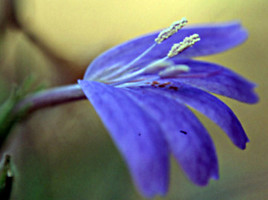
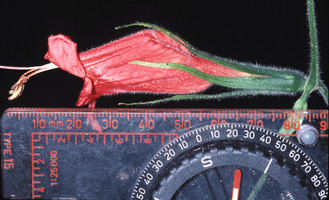
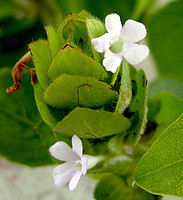
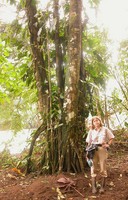

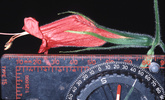



 Go to quick links
Go to quick search
Go to navigation for this section of the ToL site
Go to detailed links for the ToL site
Go to quick links
Go to quick search
Go to navigation for this section of the ToL site
Go to detailed links for the ToL site